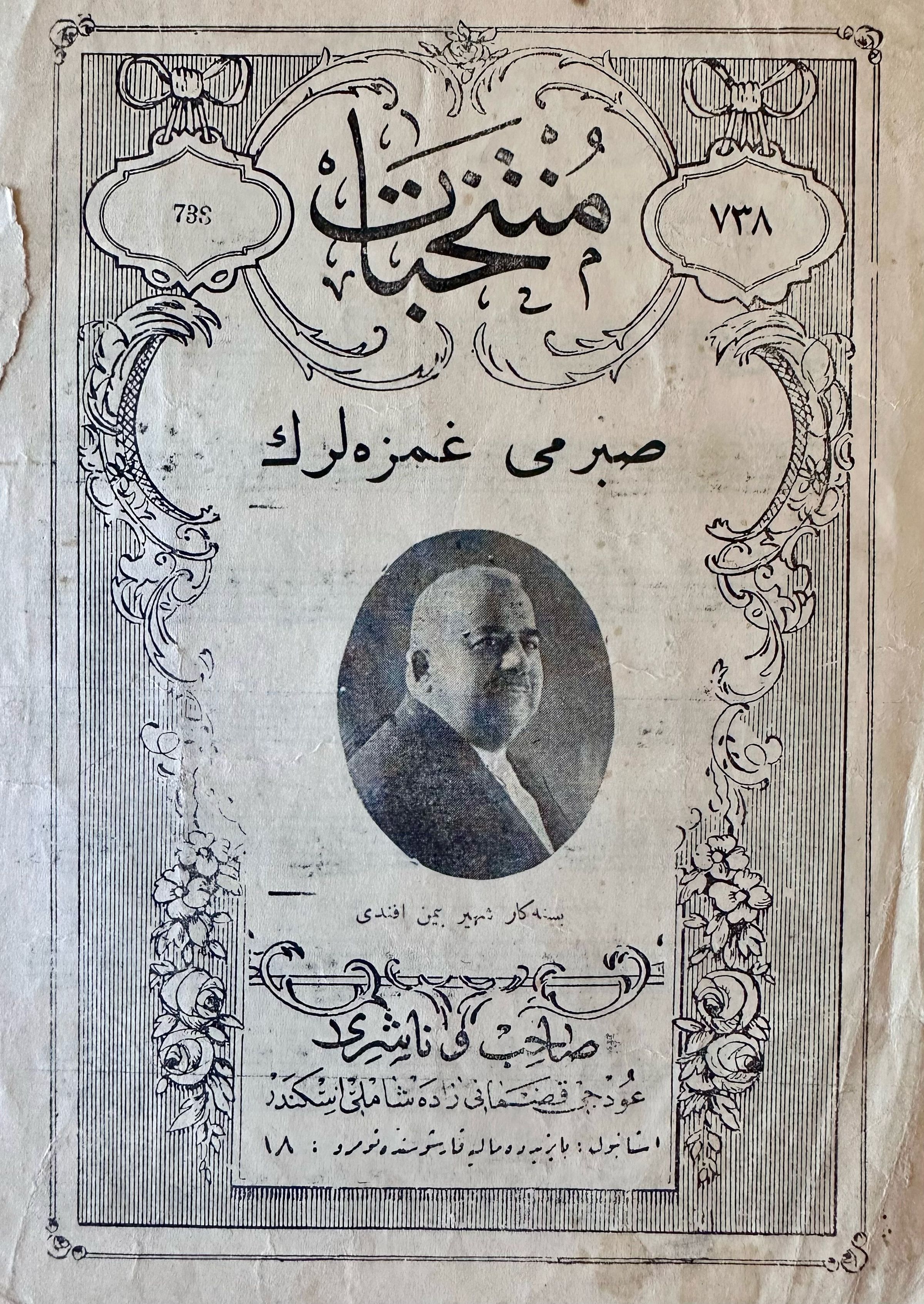Musical Notation Book, Bimen Şen, c. 1926

Name/Title
Musical Notation Book, Bimen Şen, c. 1926Description
Bimen Şen was born in 1873 in Bursa as the fourth son of Kaspar Dergazaryan, an Armenian priest. Raised in a musical household—his father, mother, and siblings all engaged in music—he began singing hymns at the local Armenian Church at the age of eight. His voice attracted attention beyond the congregation, drawing music enthusiasts and Muslim hafız alike. In early 1884, the renowned composer Hacı Ârif Bey heard him perform and encouraged him to move to Istanbul. Despite his family's objections, Bimen moved to the imperial capital at fourteen, working for an Armenian banker while continuing to sing. He briefly worked as a moneychanger but never abandoned music. Though he received no formal education in music, Bimen Şen studied with Hacı Ârif Bey, Hagopos Kıllıyan, and Lemi Atlı, and was influenced by Rahmi Bey, Hanende Nedim Bey, Tanbûrî Cemil Bey, Neyzen Aziz Dede, Kanûnî Hacı Ârif Bey, Şevki Bey, and Hacı Kirâmî Efendi. His fame grew during World War I and the Armistice years. His singing eventually drew the attention of Mustafa Kemal Atatürk, who invited him to perform in Ankara and at Dolmabahçe Palace. The popularity of his kürdilihicazkâr song beginning with “Yüzüm şen, hâtıram şen, meclisim şen, mevkiim gülşen” led him to adopt the surname “Şen” ("cheerful") under the 1934 Surname Law. When Yahya Kemal Beyatlı sent a quatrain from Warsaw, beginning “Mevsim sonu yas bağladı gülşen yanımızda,” Bimen Şen composed a song in the acemkürdi mode, which drew praise from poet Süleyman Nazif, who wrote: “Ebedî nâzımıdır san‘atı feryâdımızın / Öperiz ağzını hep Bîmen üstadımızın.” Although he did not play any instruments or learn notation, Bimen Şen is said to have composed around 1,000 pieces, usually at night and inspired by the emotional strength of the lyrics. He respected the traditional styles of his mentors but developed a distinctive voice marked by expressive clarity and solid technique. Most of his works were transcribed by oud player Arşak Çömlekçiyan and Aleko Bacanos. Only about 250 compositions have survived, likely because many were never written down. His songs, nearly all centered on themes of love and nature, remain essential to the Turkish classical repertoire. Music historian Yılmaz Öztuna cataloged three marches and 241 songs by Bimen Şen. Around 220 of these, including this one, were published in Istanbul by Şamlı İskender and Şamlı Selim. Şamlı İskender, a prominent compiler and publisher of Ottoman music, played a key role in preserving Bimen Şen’s legacy at a time when oral transmission was still the norm. Bimen Şen continued singing and recording well into his later years. He died on August 26, 1943, in Istanbul and was buried in the Feriköy Armenian Cemetery.Category
Books

